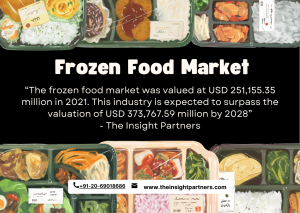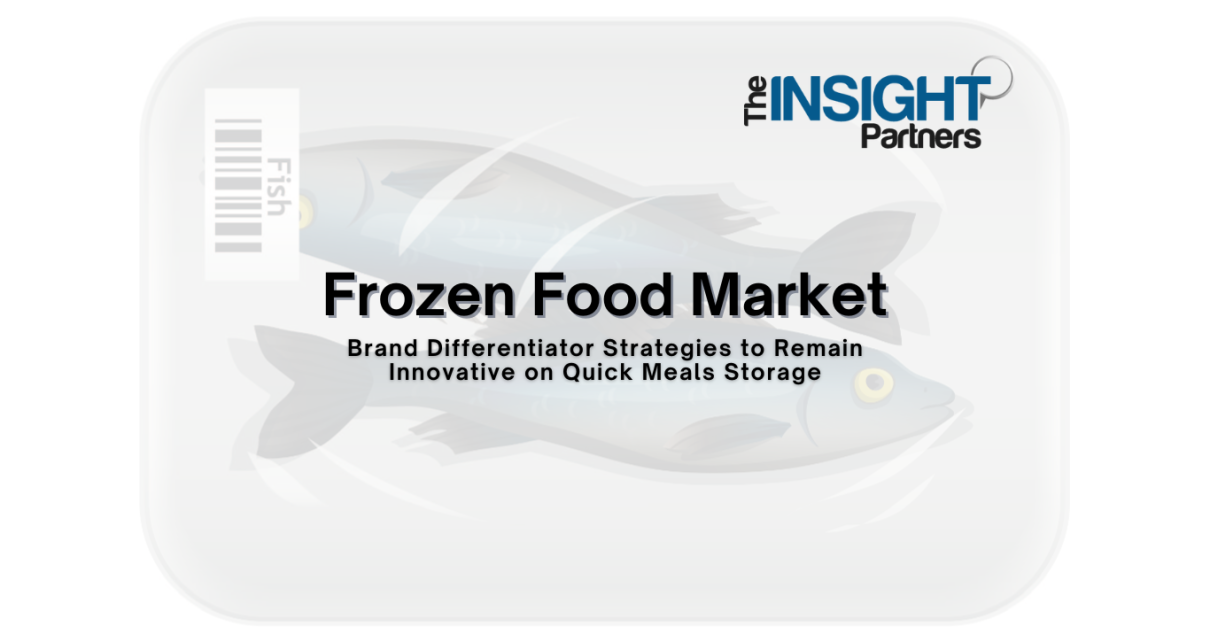The roots of the skyrocketing frozen food market date back to the first incidence of freezing food in the 15th century. However, it wasn’t the rise of the real competition in frozen food market players. Freezing of food spurred by developments in freezing technologies post-introduction of refrigerators. It’s a journey that took many years for food to become ready-to-eat meals that need just a warm-up in the microwave before indulging in it.
Today many years after the first freezing of food, frozen food has gained traction of growth. Customers are looking for convenience food that is simple to prepare and accessible. Categories under frozen food are anticipated to gain lucrative sales in coming years due to industry trends such as natural ingredients, quick meals, canned food, and healthier choices.
The inclusion of the fast food niche with frozen products is attributed to the 20th century. Frozen foods now become part of the daily diets of many countries such as the UK and the US. Impulse purchases are the result of rising incomes. Growing inclination towards vegan products is seen to positively influence frozen food market growth.
How Frozen Food Market is Growing in Competition with Others?

Frozen food has gained popularity because of the convenience factor. There is no need for additional culinary expertise while dealing with frozen delicacies. Frozen food taste and flavors sometimes outperform homemade alternatives.
“Worldwide, the frozen food market was valued at USD 251,155.35 million in 2021. This industry is expected to surpass the valuation of USD 373,767.59 million by 2028” – The Insight Partners
Sales of frozen food have been boosted further by the recent Covid-19 pandemic where repeated travel restrictions made people opt for frozen items. Frozen snacks have gained a prominent market share in recent years signifying wide acceptability. Furthermore, the expanded network of modern retail outlets has led to its penetration. Moreover, the rising demand is attributed to the “convenience food” trend. Many people prefer to stock frozen food to avoid many trips to the market. Frozen food further enables consumers to reduce food wastage and make the right buying decisions.
Health-conscious consumers are emphasizing on trend of organic ingredients. The increased demand for organic applicable to the frozen food products aisle. Frozen quick meals containing organic ingredients are projected to acquire a lucrative market share in the upcoming decade. Moreover, premium frozen treats have noticed significant demand in recent years owing to their high quality and level of nutrition. Frozen dried fruit snacks are gaining traction in demand due to the health of the way indulgence it has to offer.
In urban and semi-urban areas majority of millennials opt for frozen food resulting in wide acceptance of these delicacies. Altering dietary patterns also inspires people to make informed decisions about their health. Consumers are inclined towards nutrient-rich snacks and ready-to-eat items. This shifting attitude towards dietary transformations has boosted sales of frozen food. Rising prices of groceries have driven consumers to frozen food. It is estimated that in the coming decade, the frozen food segment will outperform some grocery segments.
Europe held a major market share in frozen food in 2022. It is anticipated to account for USD 85,000 million by 2028. The European market is centered around Germany, France, Italy, and the UK. Escalated demand for convenience food has led to a rise in sales of frozen food. Retail infrastructure in this region has created a favorable environment for F&B companies switching to frozen chains.
High per capita income in this region is expected to further bring a swift uptake in frozen food sales in the coming decade. Organic, minimally processed, and gluten-free frozen food options are anticipated to boost market growth further in the coming decade. In the U.S. consumers are swapping fresh food with frozen variants. Globally trend of convenience food is penetrating faster. This is expected to bring new regional opportunities for frozen food market manufacturers.
How are Innovations Helping Frozen Food Market Players to Climb Strategic Highs?
Frozen Yogurt Market Chains Have Popped Up
Frozen yogurt chains have popped up targeting premium consumers. Most high-quality brands acknowledge that storage and consistent innovation in products have made them sustainable for longer in this competitive industry. Manufacturers offer strawberry, banana, vanilla, and honey flavors in frozen yogurt.
This low-calorie alternative to ice creams has gained sufficient attention from consumers. Exotic flavors, minimum sugar and fat content, and low calories are key drivers of innovation in frozen yogurt flavors. To accommodate changing demands from the consumer end, companies need to produce more products such as bio, fruits, and organic flavors
Frozen Bakery Products Market – A New Niche for F&B Companies
From traditional varieties of frozen peas, nuggets, french fries, and veggies, this industry has transformed. Now companies are active in frozen meat, veggies, and fruits. Frozen bakery products have gained attention among both consumers and manufacturers in the recent past.
Apart from plant-based ice creams and yogurt, other ready-to-eat desserts have gained traction of momentum in this industry. Kid-friendly frozen microwavable confectionaries have been introduced in the market by companies. Overall frozen bakery product market is expected to surpass the valuation of USD 33.3 billion by the end of 2028 from USD 25.31 billion in 2021.
Plant-based Frozen Food Market to Tackle Food Fatigue
Innovation across all categories helps businesses to unlock new revenue streams. It’s also assisting consumers to fight food fatigue. Better formulations help in maintaining weight. People are looking for food that delivers nutritional value with taste. Companies are exploring novel plant-based protein sources that deliver taste and texture equivalent to animal products. Plant-based frozen varieties could be a clear differentiator for the brand in coming years.
Fans of hotel meals can now recreate them at home due to convenience and time-saving frozen food options. These are not only easy to prepare but also budget-friendly. Many brands are targeting working experts by increasing their flavors. The Good Food Institute reported about 27% growth in plant-based food in 2020. This has highlighted the space for companies to bridge the market gap with plant-based ready-to-eat meals. As the popularity of frozen food grows, cold storage facilities are being under pressure to keep up. However, with manufacturers deploying automation in quick meal storage operations, cold storage has advantages to offer food companies of all sizes.
How Cold Storage Can Change the Game in Favor or Against Companies?
Dealing with workable lows and stability of frozen quick meals
In cold chain storage, many factors can impact quality, food processing, and post-processing. There are rounds of discussion quantitatively expressing the quality of freezing methods applied. Ice crystal morphology and glass transition have an impact on the quality of food.
Food undergoes biochemical spoilage reaction with an increase in temperature. Food is stored at a lower temperature its degradation slows down. The rate of bacteria growth is reduced further while freezing which is a crucial factor in the shelf life of food. It might be inferred that storage temperatures directly influence the shelving lives of food.
To retain the quality of frozen food it needs to be maintained at the required temperatures as a part of cold chains including storage, transport, and retail displays. Faulty inventory control can cost high to companies dealing in frozen food.
Operational failures can lead to consumer dissatisfaction while they can create an impression about the entire industry. The stability of frozen food depends on various reasons such as the quality of raw material and processing. Most products require storage below temperature of 0 °F (-18 °C) for various food types.
Sealed Packaging for Long Shelf Life
Packaging plays a crucial role in frozen food quality. Packages should be sealable. The material used for packaging should be moisture-proof. Sometimes frozen meat and poultry are dried out which is described as “frozen burn” which is mostly an outcome of poor-quality packaging. Sometimes air in headspace is replaced by inert gases such as nitrogen which causes changes in the color of food. Frozen products are meant to retain their flavors better than other conventional methods. Freezing is also preferred due to nutrition retention capacity than conventional methods.
Multipurpose Cold Storage near Consumer Centers
Food is perishable, it should be stored at low temperatures. This will lead to an increase in their shelf life. Deep freezers (0oC to – 22oC) and cold storage (below 0oC) are opted in for this purpose. Multipurpose cold storage is used to include different types of food such as chicken and meat at the same time. Cold stores should be located near consumer centers.
Small Cold Storage for Low-Midscale Companies
Small cold storage is designed to provide pre-cooling facilities. These enable manufacturers to target exports to global markets. Small-scale companies can choose these options based on the cost of cooling and safety. Walk-in cold stores are utilized by companies for food products intended to be stored at lower temperatures. Temperature-sensitive refrigerators allow low spending while transporting food to e-grocers and grocery stores.
What Ahead in Frozen Food Market Roller Coaster?
Innovation is crucial for companies to outperform the competition. Storage facilities are an integral part of the frozen food industry, as it determines the quality and shelf life of food. As consumers are buying more frozen food, companies are estimated to expand their storage capacities and redesign their cold transportation.
A sophisticated supply chain is required to keep food at the proper temperature. Major F&B companies are investing in the creation of a complex network of cold storage and acquiring refrigerator trucks. Key companies in the frozen food market are opting for global expansion of cold storage facilities trying to gain a competitive edge. Certainly, innovation and cold storage are two crucial areas where F&B companies can gain a competitive edge in the coming years.
References-
Forbes- Refrigerated Warehouses Don’t Have Their Supply Chains Down Cold
Retail Insight Network- The rise of frozen food: retailers’ opportunities and challenges
Good Food Institute- Plant-based food retain sales grew 27percent to reach USD 7 billion in 2020



